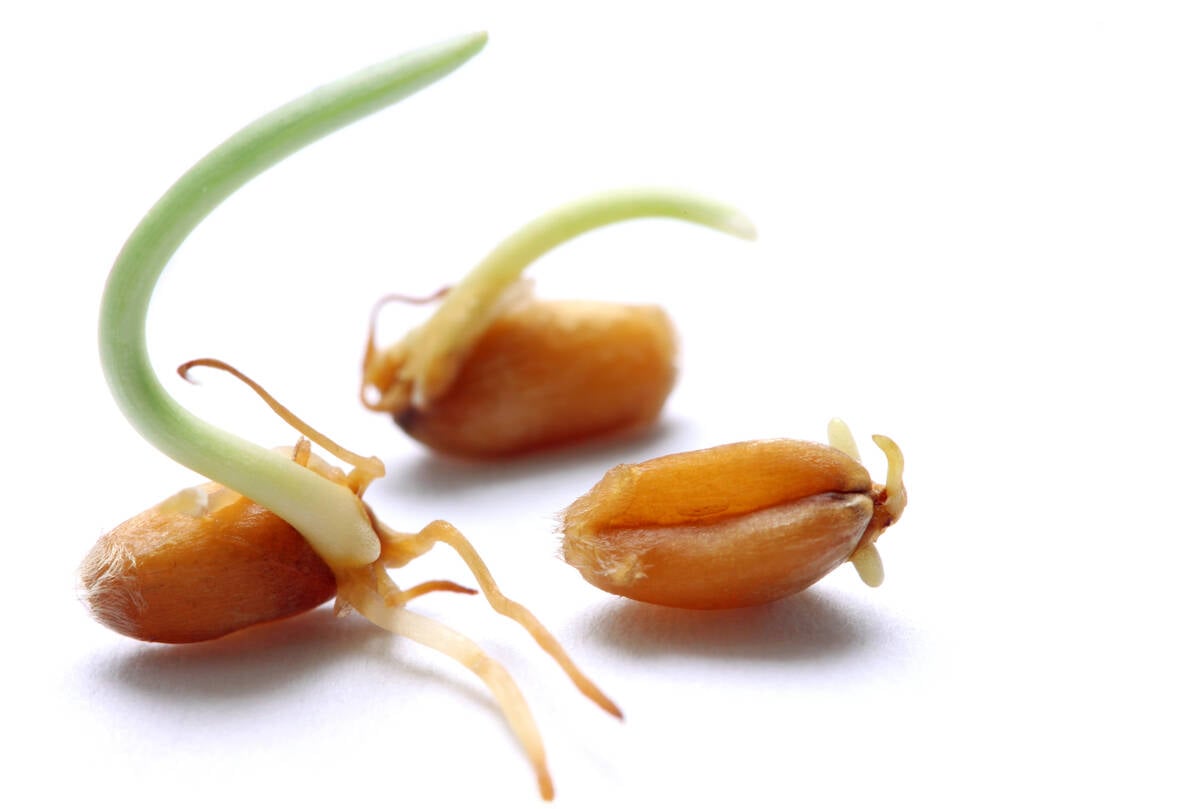The number of bale processors on the market can make buying a mind-boggling experience for many cattle producers.
“As the feeding and cattle industry in general has grown, interest in bale processors has, too,” said Blaine Metzger, a project technologist at the Alberta Agriculture AgTech Centre in Lethbridge.
“Choosing the right model is not easy. While most processors are designed to operate under a variety of conditions, each has unique advantages and features.”
The centre has developed a seven-point checklist to help make this decision easier.
Read Also

Manitoba farmers fight sprouted wheat after rain
Rain in mid-September has led to wheat sprouting problems in some Manitoba farm fields.
This varies greatly, so producers should consider the type of functions they need.
“For example, some processors cannot spread heavy layers of bedding or are limited in the spreading distance, while other models spread material over greater distances to cover hilltops for erosion control, sugar beet piles to increase storage time, or manure lagoons for odour control,” Metzger said.
“Some processors spread an even layer of bedding across the entire distance, whereas others do not.”
Feedbunk height is another consideration. Some processors can reach high feedbunks and evenly distribute material over a fence to a feedbunk on the other side, while others can’t.
“Regardless of size, all producers may want to consider a processor with the ability to add supplemental feed or nutrients to the processing material,” he said.
“In southern Alberta this year, many pastures produced very little or nothing, so processors that could accommodate mixing in feed ingredients were in high demand.”
Most bale processors are driven by a power take-off and the power requirements can range from 60 to 150 hp. Many small operations have limited power to operate the machines, but manufacturers have developed a range of models to accommodate most tractor sizes.
Most processors also need one to three hydraulic remote hookups to operate mechanisms such as self-loading forks, rotating material chambers or for material feeding rotors, Metzger said.
“Some of the more basic models require another tractor to load the processor, but most are self-loading, so that is something else to consider.”
Determining the type of material the processor will handle is a big factor in deciding which model to choose.
Some are limited to handling only round or square bales, while others can handle a range of bales and even loose materials such as wood chips.
Some processors can handle only dry material, while others can efficiently process wet material.
In the evaluations, processors with large, open material chambers and rotors, and large distribution chambers were able to process all materials, though some were more efficient than others.
Large, open material chambers, distribution chambers and rotors also play a part in the operating ease of a processor.
As well, machines that allow numerous adjustments for processing mechanisms offer the most trouble-free processing. Adjustments for material feeding, processing speed and aggressiveness, length of cut, material distribution and other parts of the processing sequence are the best for controlling the final product.
“Speed is another factor to consider, but isn’t as critical for the smaller operations as for large feedlots,” Metzger said.
“An adjustable, aggressive processing mechanism and material feeder system with a large processing chamber ensures the quickest processing of all materials. A large open distribution chamber also helps because it provides the least material flow resistance.”
The cost will vary depending on the adjustment and processing capabilities, materials handled, self-loading ability and extra options.
A general rule in assessing durability is the fewer moving parts the better.
“Choosing a bale processor is a compromise between features, capabilities and cost,” Metzger said.
For more information, including bale processor buying guides and Evaluation Report 747, Bale Processors, contact the AgTech Centre at 3000 College Dr., Lethbridge, Alta., T1K 1L6, phone 403-329-1212 or fax 403-328-5562.














